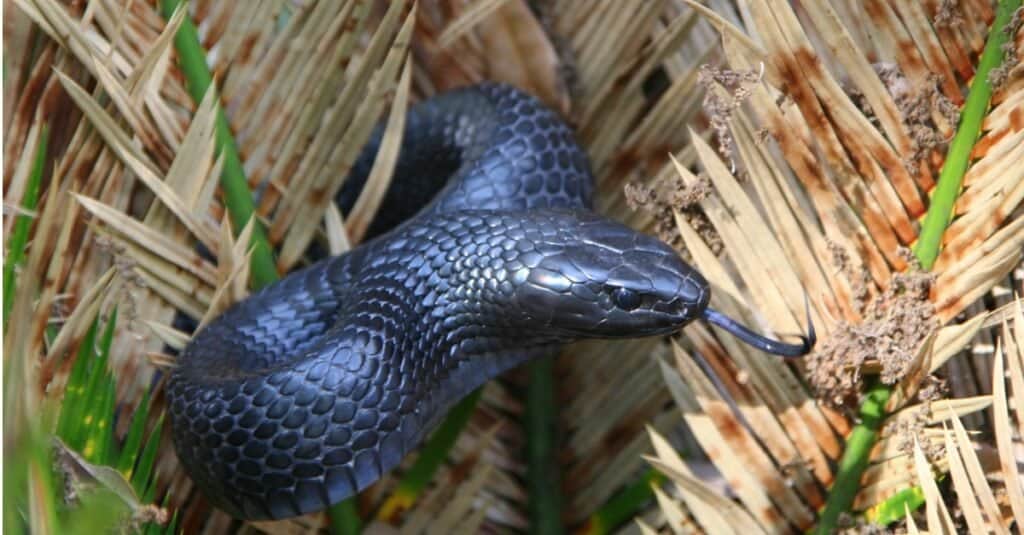Introduction
When it pertains to the fascinating world of serpents, few varieties capture the imagination quite like the infant tiger snake. Understood for their unique pigmentation and powerful venom, these snakes are an essential part of Australia's unique environment. In this detailed short article, we will explore various aspects of child tiger serpents, including their habits, habitat, and exactly how to securely engage with them. Whether you're a wild animals enthusiast or just interested about these creatures, recognizing infant tiger snakes can assist cultivate a deeper gratitude for nature.
Baby Tiger Snakes: What You Required to Understand About Their Actions and Habitat
What Are Child Tiger Snakes?
Baby tiger serpents are adolescent forms of Find more info the extremely venomous varieties recognized tree snake medically as Notechis scutatus These serpents are largely found in coastal areas of Australia, specifically in Tasmania and southerly Victoria. As they grow, their coloration adjustments from an extra muted palette to the particular yellow and black bands that give them dugite their name.
One significant facet of child tiger serpents is their dimension; hatchlings usually gauge around 25-30 cm in size. In spite of their little stature, they have a surprising amount of venom that can be detrimental to human beings if bitten.
Physical Characteristics
Tiger snakes possess numerous essential physical traits:
- Coloration: The unique banding pattern typically comes to be a lot more pronounced as they mature. Size: Adults can reach sizes of up to 2 meters. Body Shape: They have a robust body that aids in swimming and earthbound movement.
Where Do Infant Tiger Snakes Live? Comprehending Their Habitat
Understanding the environment preferences of infant tiger snakes is important for both conservation efforts and public security. These serpents thrive in various settings:
- Wetlands: Marshes and swamps supply sufficient searching grounds. Coastal Regions: Frequently discovered near beaches where they can quest for prey. Woodlands: Dense vegetation uses cover from predators.
Geographical Distribution
Tiger snakes are mainly found along Australia's southern shoreline, consisting of:
- Tasmania: Home to among one of the most notorious populations. Victoria: Especially in locations near water bodies.
Are Tiger Snakes Venomous? A Deep Study Their Venom
One typical concern arises when going over baby tiger snakes: "Are tiger serpents venomous?" The response is a definite yes!

Venom Composition
The poison of tiger serpents includes neurotoxins that can create paralysis, coagulopathy (blood clot issues), and possibly fatality if neglected. Right here's what you require to recognize:
- Effects on Humans: An attack from a tiger serpent can cause symptoms like swelling, discomfort at the bite site, nausea or vomiting, and also respiratory failure.
Comparison with Various other Poisonous Snakes
In comparison to other Australian snakes such as the eastern brownish snake or king brownish serpent, tiger serpent venom is considered amongst one of the most powerful. Nevertheless, fatalities are unusual due to enhanced clinical treatments and accessibility to antivenom.
Behavioral Patterns of Child Tiger Snakes
Understanding how infant tiger serpents act is essential for those who reside in or visit locations where these reptiles are prevalent.
Nocturnal Habits
Most infant tiger snakes exhibit nocturnal actions. They tend to forage for food throughout cooler evening temperatures. This versatility aids them avoid predators while improving their hunting efficiency.
Hunting Techniques
Their hunting techniques consist of:

- Ambush Predation: Waiting inactive up until target comes close. Active Foraging: Proactively relocating through plant life or along waterways trying to find food.
First Aid for Serpent Bites: What You Should Know
Despite being fascinating animals, experiences with baby tiger snakes can bring about hazardous circumstances if attacks happen. Knowing first aid procedures can conserve lives.
Immediate Tips After a Bite
Remain calm; panic enhances heart rate. Immobilize the impacted arm or leg using a splint or bandage. Seek immediate clinical attention-- antivenom may be necessary.Creating a Serpent Bite First Aid Kit
A well-prepared emergency treatment set must include:
|Product|Function|| ------------------------------|--------------------------------------|| Compression plaster|To paralyze the arm or leg|| Splint|Maintains broken bones or joints|| Antihistamines|Minimizes allergic reactions|| Emergency contact numbers|Quick accessibility during emergencies|
Common Misconceptions Regarding Tiger Snakes Debunked
Many myths border these interesting reptiles; allow's clear up some misunderstandings frequently held by people.
Myth # 1: All Tiger Snakes Are Aggressive
While some individuals may exhibit defensive behaviors when endangered, not all tiger snakes display screen aggression towards humans unless provoked.
Myth # 2: Baby Tiger Snakes Are Much Less Dangerous Than Adults
This misconception might not be better from the fact! Infant tiger serpents consist of nearly as much poison as grownups relative to their dimension; hence they present significant risks if bitten.
FAQs Concerning Child Tiger Snakes
What do infant tiger snakes eat?- They mainly eat little mammals, birds, frogs, and fish.
- Look for slim bodies with pale banding patterns that come to be a lot more pronounced as they mature.
- Yes! Birds of target and bigger reptiles might target them.
- Typically every few weeks as they proliferate during their very early life stages.
- While some individuals do keep them illegally without licenses due to their dangerous nature; it's usually not suggested given their poisonous status.
- With punctual medical treatment-- including antivenom-- the survival rate is high!
Conclusion
In summary, recognizing child tiger snakes-- what they eat, where they live, exactly how they act-- can furnish us with useful understanding regarding these impressive yet unsafe creatures. The value of education and learning surrounding emergency treatment steps can not be overemphasized; knowing exactly how to react effectively after a bite could conserve lives while fostering regard for our slinking neighbors within Australia's rich biodiversity spectrum.
By valuing these serpents' functions within ecosystems-- and acknowledging possible hazards-- we promote coexistence as opposed to fear-based reactions toward one another's presence in nature's grand tapestry! Whether you're a serious walker considering your next experience or just curious about regional wildlife encounters near home-- this overview serves as your trusted reference point on the enigmatic world populated by our friends-- the amazing baby tiger snake!